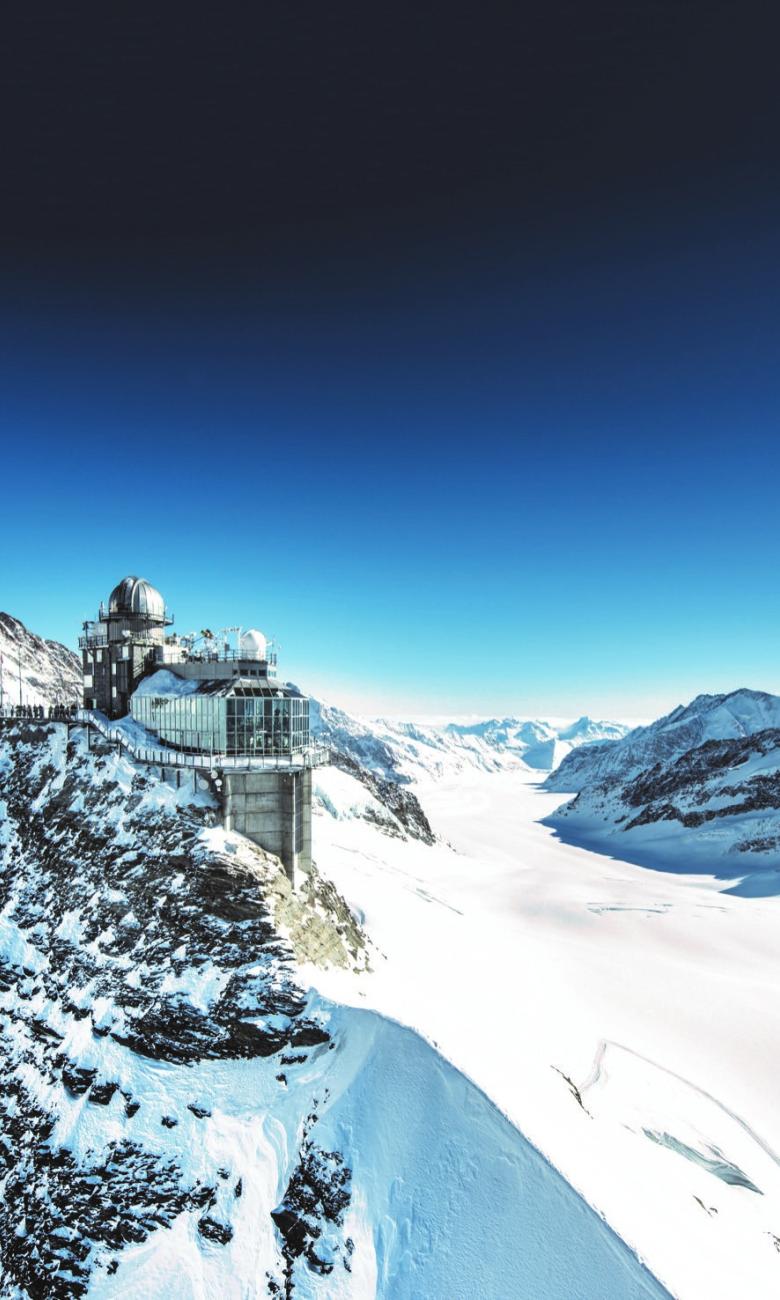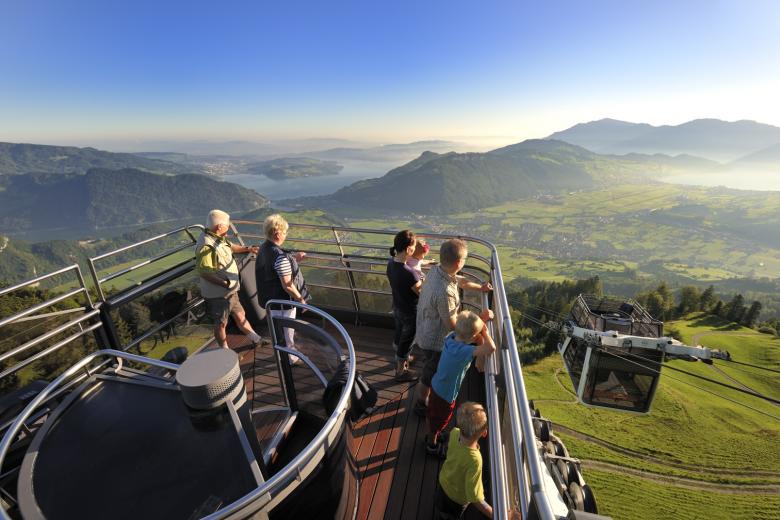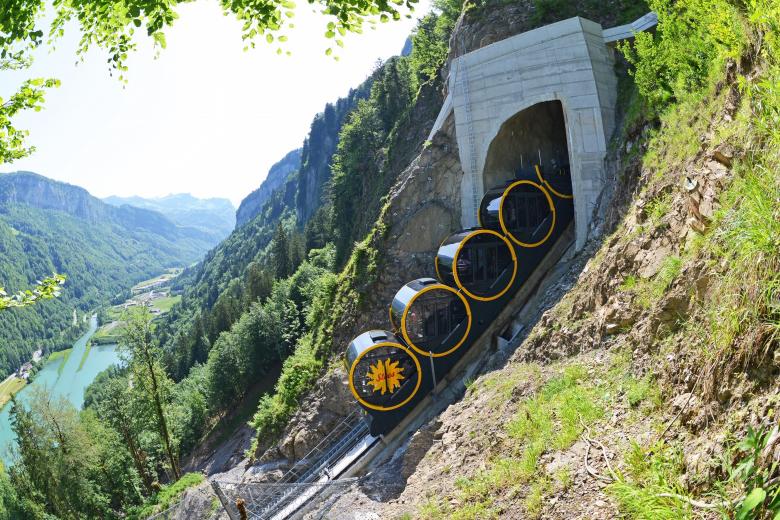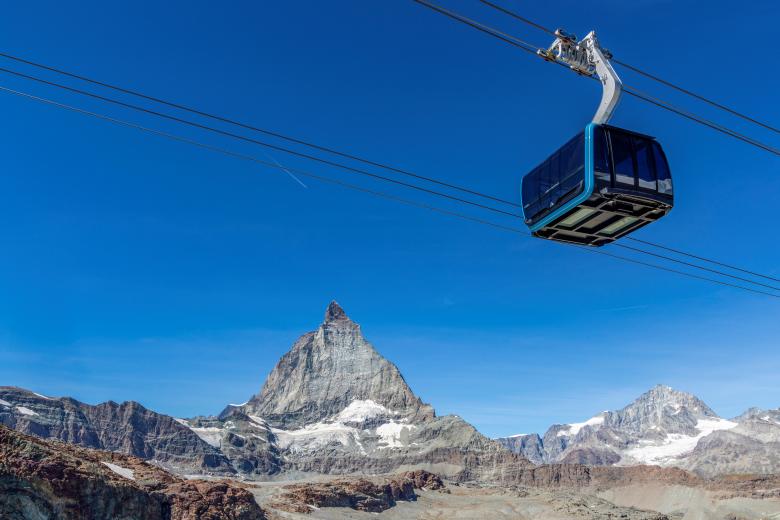Swiss public transport: a masterpiece of innovation
Travelling by public transport in Switzerland is easy and convenient. Trains, buses, boats and mountain railways whisk passengers to their destination swiftly, on time and in style. Switzerland's public transport system has literally blazed a trail marked by improvements and innovations and is now among the best in the world.
Switzerland is closely associated with its public transport system, which boasts an impressive history and is unique in the world. Several feats of engineering were accomplished early on: the first steamship set sail in the nineteenth century, which also saw the inception of the world's longest rail tunnel and Europe's first mountain railway. And the work did not stop there. Switzerland continues to invest heavily in its public transport system, paving the way for cutting-edge innovations. Both locals and tourists agree: Swiss public transport makes for a highly enjoyable experience, combining innovation and tradition. Take a trip back in time and learn about the world's densest public network system....

How it all started and got everyone going
On 18 June 1823, the first Swiss steamship sails across Lake Geneva and, a little later, Lake Lucerne. Some four decades later, Thomas Cook, the British pioneer of global travel, created the package holiday that remains so popular today, marking another milestone in the history of Swiss tourism. Sixty intrepid tourists make their way from London to Geneva, venturing into the Bernese Oberland and then on to Lucerne and Neuchâtel. Their preferred modes of transport: trains, horse-drawn carriages and mules. At the same time, work started on extending routes across the Alpine passes and the first mountain railways were launched, paving the way for large-scale tourism in the Swiss Alps. In 1871, Europe's first mountain railway, the Vitznau-Rigi Railway, starts operating. The 15-km long Gotthard tunnel became operational in 1882, providing an important north-south route through the Alps and access to famous spa resorts, such as St Moritz and Zermatt. A short while later, some further feats were accomplished in the Bernese Oberland: the first cable car in Grindelwald in 1908 and the opening of the Jungfraujoch railway in 1912. At 3,454 metres above sea level, the Jungfraujoch still boasts Europe's highest altitude station. More than a century later, Switzerland broke another world record when it opened the Gotthard Base Tunnel (57 km) in 2016. Many in the past have felt the pull of Switzerland and the desire to explore the country continues unabated.
One world record after another
Despite achieving so many technical feats, Switzerland has continued to invest steadily in the development of public transport. And this investment has paid off. There are all sorts of reasons to discover Switzerland by public transport: breathtaking scenery, guaranteed connections and the coexistence of tradition and innovation. It is possible to combine historic and modern modes of transport to create the perfect journey: at the Stanserhorn, for example, you can take the 1893 vintage funicular to the midway station and then change onto the futuristic CabriO cable car. The CabriO, which opened in 2012, is the world's first doubledecker cable car with an open top. And the Stoos funicular railway gets everyone excited – not just engineers. The world's steepest funicular is perfectly configured for the extreme slope. The floor of the compartments stays horizontal until the top, where passengers can enjoy the breathtaking panoramic view of ten lakes and the magnificent mountainscape.


Unparalleled variety and thrills galore
Impressive steamboats were already shuttling across Switzerland's lakes a long time ago. However, luxury motor vessels, such as the MS Diamant, have now joined the fleet of passenger ships. The MS Diamant provides underwater views, a lake water footbath and an indoor gallery with a glass dome. And if glass domes are achievable, why not have glass floors, suspended 170 metres above ground, while we're at it? It comes as no surprise that these exist in Switzerland, or in Zermatt, to be precise, which boasts a state-of-the art gondola lift called the 'Crystal Ride' – the highest of its kind. During the ride up to the Matterhorn Glacier Paradise, the opaque glass floor clears in seconds, revealing a superb 360-degree view of the glacier landscape. The spectacle is so enthralling that it instantly banishes any feeling of vertigo.


Innovation – a Swiss strength
Swiss public transport clearly stands for reliability and innovation - qualities that are associated with Switzerland. It's no wonder that there's enough space on Swiss trains for almost the entire population of Iceland, offering a total seating capacity of 291,000.
The Swiss are extremely attached to their public transport and have every reason to be proud of it. Investment in the public transport system is therefore set to continue. Watch this space. It's only a matter of time before Switzerland bags yet another world record.




